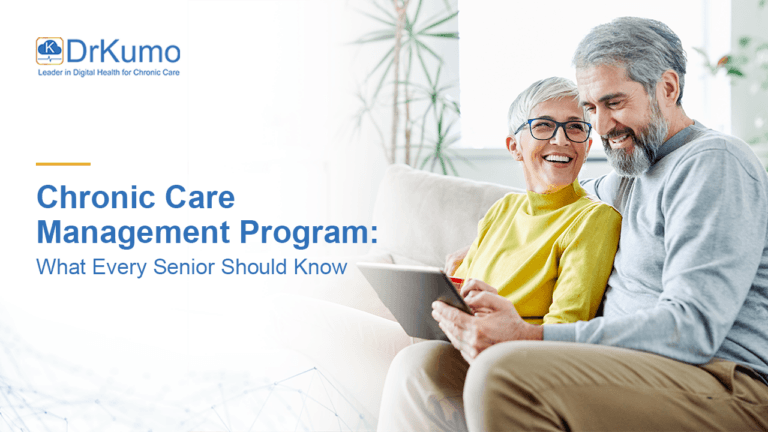Chronic obstructive pulmonary disease (COPD) is a chronic lung disease affecting millions worldwide. It is the third leading cause of death globally, and the burden of the disease is expected to increase due to aging populations and continued exposure to risk factors such as smoking.
COPD patients require ongoing management and support to improve their quality of life, prevent exacerbations, and reduce the risk of morbidity and mortality. Patient education is critical to COPD management and enhances patient outcomes.
This article aims to provide healthcare providers with an overview of COPD patient education, including its benefits, practical strategies, and critical components.
Understanding COPD and its Symptoms
COPD is a progressive lung disease characterized by airflow limitation that is not fully reversible. The most common risk factor for COPD is tobacco smoking, although exposure to air pollution, occupational dust, and chemicals can also contribute to developing the disease. COPD can be classified into two main subtypes: chronic bronchitis and emphysema, with some patients exhibiting features of both.
Common symptoms of COPD include dyspnea, cough, sputum production, and wheezing. Dyspnea or shortness of breath is the most prominent symptom, and it can lead to significant limitations in physical activity and quality of life. In some cases, COPD can also cause acute exacerbations, characterized by a sudden worsening of respiratory symptoms, and can result in hospitalization or even death. Understanding the symptoms of COPD is critical for the early detection and management of the disease.
The Role of Patient Education in COPD Management
Patient education is a crucial component of COPD management. It helps patients and caregivers understand the disease, its symptoms, and the importance of self-management in improving outcomes. Patient education can also increase adherence to treatment plans, improve coping skills, and enhance patient-provider communication.
Effective patient education should include information on the following key areas:
- COPD Overview and diagnosis
- Risk factors and prevention strategies
- Symptoms and their management
- Medication use and inhaler technique
- Self-management strategies, including action plans for exacerbations
- Exercise and physical activity recommendations
- Smoking cessation support
- Nutritional advice
- Support resources for patients and caregivers
Patient education should be tailored to the patient’s needs, considering their COPD severity, coexisting conditions, and social support. It should also be provided regularly, reinforcing key messages and addressing new concerns or questions.
Patient education is a valuable tool in COPD management, and healthcare providers should prioritize it as part of their patient care plan.
Self-Management and COPD Exacerbation Prevention
Self-management is a critical component of COPD care, and it plays a crucial role in preventing exacerbations and improving outcomes. Patients with COPD should be encouraged to actively participate in their care and develop a self-management plan in collaboration with their healthcare provider.
Self-management strategies for COPD should include the following:
- Medication adherence: Patients should understand the importance of taking their medications as prescribed and be able to use their inhalers correctly.
- Action plans for exacerbations: Patients should have an action plan for managing exacerbations, including when to seek medical attention.
- Exercise and physical activity: Patients should be encouraged to participate in regular exercise and physical activity to improve their overall health and reduce symptoms.
- Smoking cessation: Patients who smoke should be provided with resources and support to quit smoking.
- Nutrition: Patients should receive guidance on maintaining a healthy diet to support their health and well-being.
Preventing exacerbations is a crucial goal of COPD management, and self-management strategies play a vital role in achieving this goal. Patients should be educated on the early warning signs of exacerbations and encouraged to seek medical attention promptly. By working with their healthcare provider and following a self-management plan, patients with COPD can actively participate in their care and improve their overall health outcomes.
Supporting COPD Patients and Caregivers
Managing COPD can be challenging, and patients and caregivers may need support to navigate the complexities of the disease. Healthcare providers can play a vital role in supporting COPD patients and their caregivers by providing education, resources, and guidance.
- Education: Education about COPD is essential for patients and caregivers to understand the disease and its management. Healthcare providers can provide instruction on medication use, symptom management, and lifestyle modifications.
- Resources: Many resources are available to help patients and caregivers manage COPD, such as the American Lung Association and the Global Initiative for Chronic Obstructive Lung Disease (GOLD). Healthcare providers can provide information about these resources and help patients and caregivers access them.
- Care coordination: COPD patients often have multiple chronic conditions, challenging care coordination. Healthcare providers can work with other professionals to ensure patients receive comprehensive and coordinated care.
- Emotional support: COPD can be challenging to manage, and patients and caregivers may need emotional support to cope with the physical and emotional burden of the disease. Healthcare providers can provide emotional support and refer patients and caregivers to mental health professionals.
- Caregiver support: Caregivers play an essential role in supporting COPD patients, and they may also need help to manage the challenges of caregiving. Healthcare providers can provide education and resources for caregivers and refer them to support groups or respite care services.
By providing comprehensive support to COPD patients and their caregivers, healthcare providers can help improve outcomes and quality of life for patients with this chronic disease.
Revolutionizing COPD Management: The Power of DrKumo RPM for Remote Patient Monitoring
In today’s world, remote patient monitoring (RPM) is becoming increasingly important, especially for patients with chronic conditions like COPD. RPM can help healthcare providers stay connected with their patients, monitor their health status, and provide timely interventions when necessary.
DrKumo RPM is a comprehensive RPM solution that can help healthcare providers manage COPD patients remotely. DrKumo is a leader in creating highly scalable, continuous, real-time remote patient monitoring solutions for chronic disease management, acute care, post-operation, and hospital care at home. By using DrKumo RPM, providers can monitor patients’ respiratory symptoms, medication adherence, and vital signs, among other things.
Providers can also use DrKumo RPM to educate patients about COPD management and provide emotional support, even when they are not physically present. With DrKumo RPM, healthcare providers can provide high-quality care to COPD patients, even when they cannot meet in person. This can help improve patient outcomes, reduce hospitalizations, and enhance patient satisfaction.
Takeaways
COPD patient education is crucial in disease management, and healthcare providers have a vital role to play. Providers can improve patient outcomes and quality of life by educating patients about self-management, treatment options, and exacerbation prevention. Supporting patients and caregivers is also essential; providers must collaborate to provide individualized care. Let’s prioritize COPD patient education and work together to improve care and outcomes. Take advantage of the benefits of RPM and improve the lives of your COPD patients.
Contact us today to learn more about how DrKumo RPM can help you provide better care for your COPD patients.








